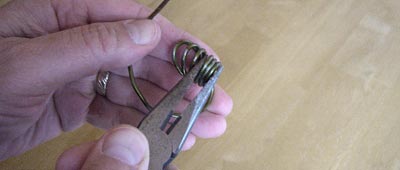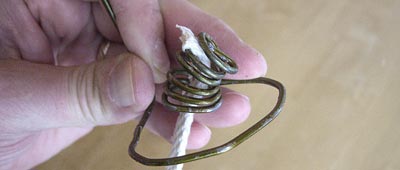An olive oil lamp is a surprisingly safe and simple lamp that you can do-it-yourself. It produces light, as much as, or more than, an ordinary candle, and is an alternative to kerosene-style oil lamps. The concept of burning oil from
Instructions how to make your own olive oil lamp
vegetables (olive oil) in the home rather than petroleum based kerosene seems more appealing, less toxic, and safer.
The Romans and other ancients regularly burned olive oil in their lamps, so, the concept is sound. Pure olive oil will not produce smoke, while other types of vegetable oils may produce some residual smoke while burning.
For those who are curious, the cost of burning olive oil in this lamp will depend on wick size (flame size and corresponding oil consumption), while my own experiment consumed 2 ounces (1/8 cup) of olive oil in 5 hours. This calculates out to about 10-cents per hour depending on how cheap you can find pure olive oil. An ordinary Votive candle may cost about 3 to 5-cents per hour to burn, although probably not as bright as the oil lamp.
You will need an ordinary metal coat hanger (these are made of steel), a wick (ordinary candle wicks are good), a canning jar (these are heat treated and can withstand the hot temperature), and needle-nose pliers.
The wick shown in this photo is a typical kerosene lamp wick. Using a scissors, I cut the wick in half (length wise) so it wouldn’t be as fat as what is shown in the photo.
Grip the pliers firmly to the metal wire of the coat hanger and twist back and forth until the wire snaps.
Using the needle-nose pliers, grip the end of the wire and then wrap the wire around the pliers about five times around. Do this somewhat loosely so as to make it easier to slide the wind off of the pliers afterward.
Use a screwdriver to assist in pushing the wound wire off of the pliers.
The wound wire will serve to hold the wick.
Form (bend) the wire while using your pliers to shape such that the wound portion of the wick holder will sit in the middle of the jar with a support loop slightly smaller than the diameter of the jar mouth, as shown in the photo. Bend the rest of the wire up the edge of the jar so you can form a handle later.
Bend back the top portion of the wick holder. This will allow the wick to point somewhat upwards when we insert it later.
Form a hook to hang over the edge of the jar as shown.
Pry apart one of the upper winds so that the wick will slip through as shown.
Once the wick is through the wire, pinch the wire enough so the wick is secure and won’t fall through. Not too tight though.
Trim excess wick. Too much wick and the flame will smoke. Too little wick and the flame will be small.
Fill the jar with pure olive oil to a level part way up the wick holder. Pour the oil over the top of the wick to speed up the soak.
After the wick is full absorbed, light the wick. You will notice that olive oil is not nearly as readily flammable as petroleum fuels and will take longer to light. This very fact assures that if the mixture is spilled, the oil will not ignite.
Insert the flaming wick assembly back into the jar.
Enjoy the lovely soft flame of your olive oil lamp! Pretty neat, yes?
You need to be a member of Ashtar Command - Spiritual Community to add comments!


















Replies